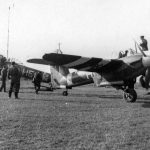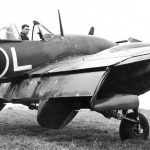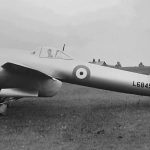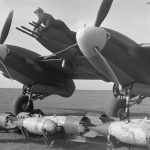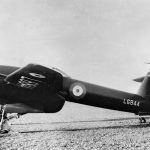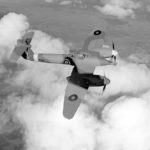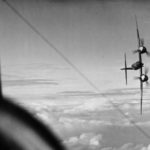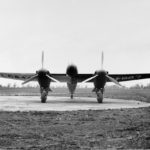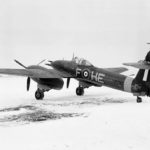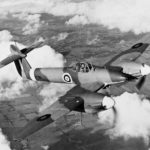Whirlwind P7116 HE-F flown by C.O. of No. 263 Squadron S/Ldr T. P. Pugh, December 1941
Whirlwind P7110 in flight
Whirlwind P7055 SF-S of No. 137 Squadron RAF 1943
Whirlwind P6974 of No. 263 Squadron RAF during Dieppe raid
Westland Whirlwind P6974 HE-M August 1942
Whirlwind HE-L with extended flaps, landing position
Westland Whirlwind 2nd prototype L6845, 1939
Bombing up a Whirlwind of No. 137 Squadron RAF, Manston 1943
Whirlibomber August 1942
Whirlibomber of No. 137 Squadron RAF, Manston 1943
First P9 Whirlwind prototype L6844 at Yeovil 1938. All Dark Grey paint scheme
Westland Whirlwind HE-H P6984 of No. 263 Squadron RAF
Westland Whirlwind HE-T P7094 of No. 263 Squadron RAF
Whirlwind P7110 in flight, 1941
Whirlwind P7110 in flight, 1941 2
Westland Whirlwind first prototype L6844
Whirlwind in flight
Whirlwind HE-V P6969 of No. 263 Squadron RAF, Exeter, February 1941
Westland Whirlwind first prototype L6844 2
Whirlwind of No. 137 Squadron RAF in flight, 1943
Fighter-bomber “Whirlibomber” of No. 137 Squadron RAF, March 1943
Whirlwind P7110 with undercarriage and flaps down
Whirlibomber P6997 during test flight
Whirlwinds HE-J P6985,, HE-L and HE-V of No. 263 Squadron RAF, March 1941
Whirlwinds squadron in flight
Whirlwind HE-F P7116 of No. 263 Squadron RAF, December 1941
Westland Whirlwind I P7110 in flight
British twin-engined heavy fighter developed by Westland Aircraft in 1938.
Whirlwind was the first Royal Air Force single-seat twin-engine fighter aircraft built by Westland Aircraft, which was introduced in the late 1930’s with good basic features and could have had a successful career during the Second World War. However, development problems with the Rolls-Royce Peregrine engine delayed the project and a relatively small number of units were eventually built. Only two RAF squadrons were equipped with the Whirlwind and despite its successful use as a fighter-bomber, it was withdrawn from active service in October 1943.
The origin of the Whirlwind concept of a fighter with guns is rooted in the construction philosophy of the new RAF fighters of the mid-1930s. With the elimination of biplane fighters, the increase in the attack speed of the aircraft and the consequent decrease in firing opportunities on the target, it became necessary to increase the minimum firepower per aircraft. Instead of a minimum of two machine guns, the RAF specified that these aircraft had to have eight! At the same time, it was recognized that cannons such as the Hispano-Suiza HS-404 that fired explosive shells was also a good way to increase firepower and a number of requests were made to develop an aircraft equipped with four of these cannons, but according to the aviation concepts of the time, only “small body” aircraft were agile enough to fly as a fighter. Following this principle, a fighter equipped with cannons would therefore have had limited space for fuel and could have been used only for defence or interception operations in view of its autonomy. It is within this context that the idea of a twin-engine fighter appeared to be the best solution. But the load represented by the fuel required would have been a clear handicap in an aerial combat against single-engine fighters. However, Nazi Germany and the United States carried out similar programs that produced the German Messerschmitt Bf 110 and the American Lockheed P-38 Lightning.
The Whirlwind is based on the Royal Air Force 1935 F.37/35 specification for a long-range, single-seat fighter armed with four cannons. Six projects (including three twin-engine) were submitted to meet this specification: the Boulton Paul P.88, the Bristol Type 153A, the Hawker F.37/35 (Hawker Hurricane variant), the Supermarine 312 (Spitfire variant), the Supermarine 313 and the Westland P.9. The Westland project won the bid and an order for two prototypes was placed in February 1937. The prototype flew on October 11, 1938 and made a strong impression mainly because of the great firepower offered by its four 20 mm cannons in the nose. The Whirlwind proved to be an aircraft well adapted to its missions (in particular because of its armament). However, it had a rather limited range and, especially, its engines were unreliable. The Rolls-Royce Peregrine engine is in fact a bloated and fragile Kestrel. As the Rolls-Royce manufacturer was concentrating its efforts on the Merlin engine intended for the Supermarine Spitfire, this condemned the plane in the long run. Despite its Fowler flaps, its landing speed of 128 kmh prohibited the use of short grass fields, and the first Whirlwind was delivered in the summer of 1940 (in service in June). Production ended in December 1941. 112 units were built. Only two squadrons (263 and 137) used it until the end of 1943 as escort fighters or for low-level attack missions. In August 1941, the 263rd escorted Blenheims to Cologne in daylight raid. The “Whirlibomber” ended its career with bombing and attack missions.



